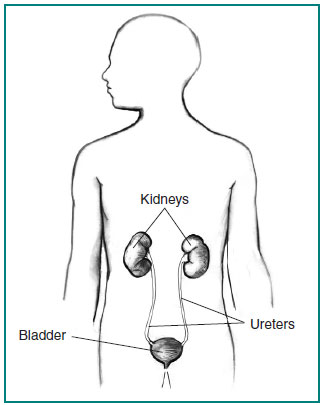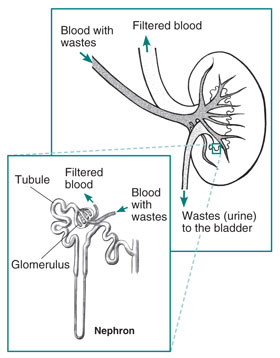Greeting to you!
I am so pleased to have some time to spend with you to provide you with additional information about your kidneys. Often when I meet with my patients at my clinic, there is just not enough time to get provide the education I think will be most helpful, so these articles are here for YOU! You can read them at your convenience and go back to them whenever you need to.
Let’s get started – understanding the basics is important!
We don’t often think about the organs in our body and what they do and how they do it until something goes wrong. We expect our hearts to keep pumping; our lungs to inflate and deflate allowing us to breathe – but what about some of those other organs like the kidneys? Where are they? What do they do? How do they do it?
Let’s start with WHERE?
Your two kidneys are located on either side of the spine, just below the rib cage. Each kidney is shaped like a bean and is about the size of an adult’s fist. Your kidneys are part of the urinary tract which includes your kidneys, ureters (a tube from each kidney} that leads into the bladder, which in turns drains into the urethra on urination.

WHAT do they do?
These small organs have important and complex work to do that helps to keep the body in balance:
- Help remove waste and excess fluid
- Filter the blood, keeping some compounds while removing others
- Control the production of red blood cells
- Make vitamins that control growth
- Release hormones that help regulate blood pressure
- Help regulate blood pressure, red blood cells, and the amount of certain nutrients in the body, such as calcium and potassium.
The kidneys filter and return to the bloodstream about 120-150 quarts of fluid every 24 hours. Approximately one to two quarts are eliminated from the body in the form of urine, while the remaining fluid is retained in the body. The urine we excrete has been stored in the bladder for approximately one to eight hours.
HOW do they do this?
- Blood enters the kidneys through an artery from the heart
- Blood is cleaned by passing through millions of tiny blood filters
- Waste material passes through the ureter and is stored in the bladder as urine
- Newly cleaned blood returns to the bloodstream by way of veins
- Bladder becomes full and urine passes out of the body through the urethra.
Here is some more information on how this works – the kidney is not one large filter. Each kidney is made up of about a million filtering units called nephrons. The nephron includes a filter, called the glomerulus, and a tubule.

The nephrons work through a two-step process. Each nephron filters a small amount of blood. The glomerulus lets fluid and waste products pass through it; however, it prevents blood cells and large molecules, mostly proteins, from passing. The filtered fluid then passes through the tubule, which sends needed minerals back to the bloodstream and removes wastes. The final product becomes urine.
Yours in good health,
![]()
– Doc Brown
References
National Kidney Foundation https://www.kidney.org/atoz/content/howkidneyswork
National Institute for Diabetes and Digestive and Kidney Diseases of the National Institutes of Health, https://www.niddk.nih.gov/health-information/kidney-disease/kidneys-how-they-work

